Terrarium tear-UP 2 -- This Time With a Tree
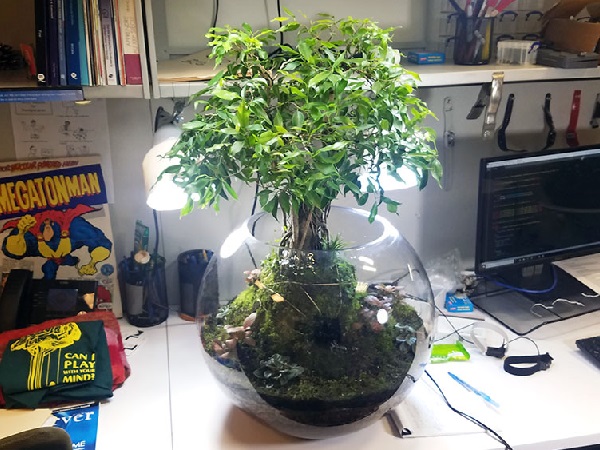

Curt White
November 25, 2018
Due to popular demand and Ada’s (MATTER Lab Tiger Salamander and deep learning expert) prodigious growth, a sequel to last year’s terrarium tear up. What is a “tear up” you ask? In electronics, a “tear down” is a step by step pictorial of a device disassembly, including identification of all its components and providing a high-level description/speculation of how the components work. Terrarium “tear up” is an amusing (to me at least) inversion of both process and materials.
The centerpiece of this year’s MATTER Lab terrarium is a Banyan tree (strangler fig, in this case, Ficus philippinensis ) bonsai. The “world tree” depicted in Hindu mythology was a Banyan tree. Ficus philippinensis is also closely related to the Bhodhi tree (Ficus religiosa) under which the Buddha attained enlightenment.
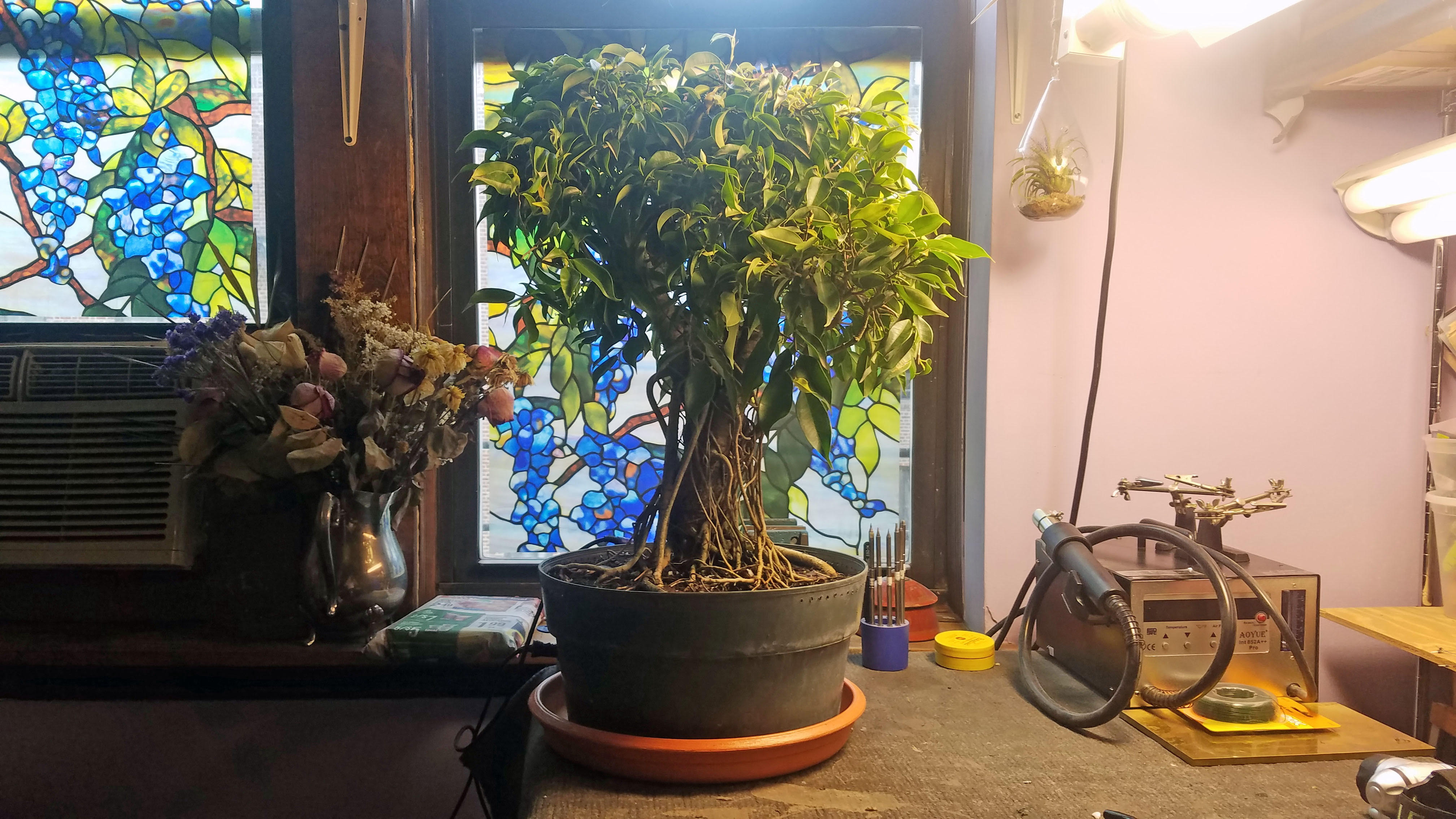 This is what the tree looked like when I first got it. Some large nurseries will keep an eye out for plants with bonsai potential among their inventory and then sell them on Ebay with a markup as “pre bonsais”. This tree is an example.
This is what the tree looked like when I first got it. Some large nurseries will keep an eye out for plants with bonsai potential among their inventory and then sell them on Ebay with a markup as “pre bonsais”. This tree is an example.
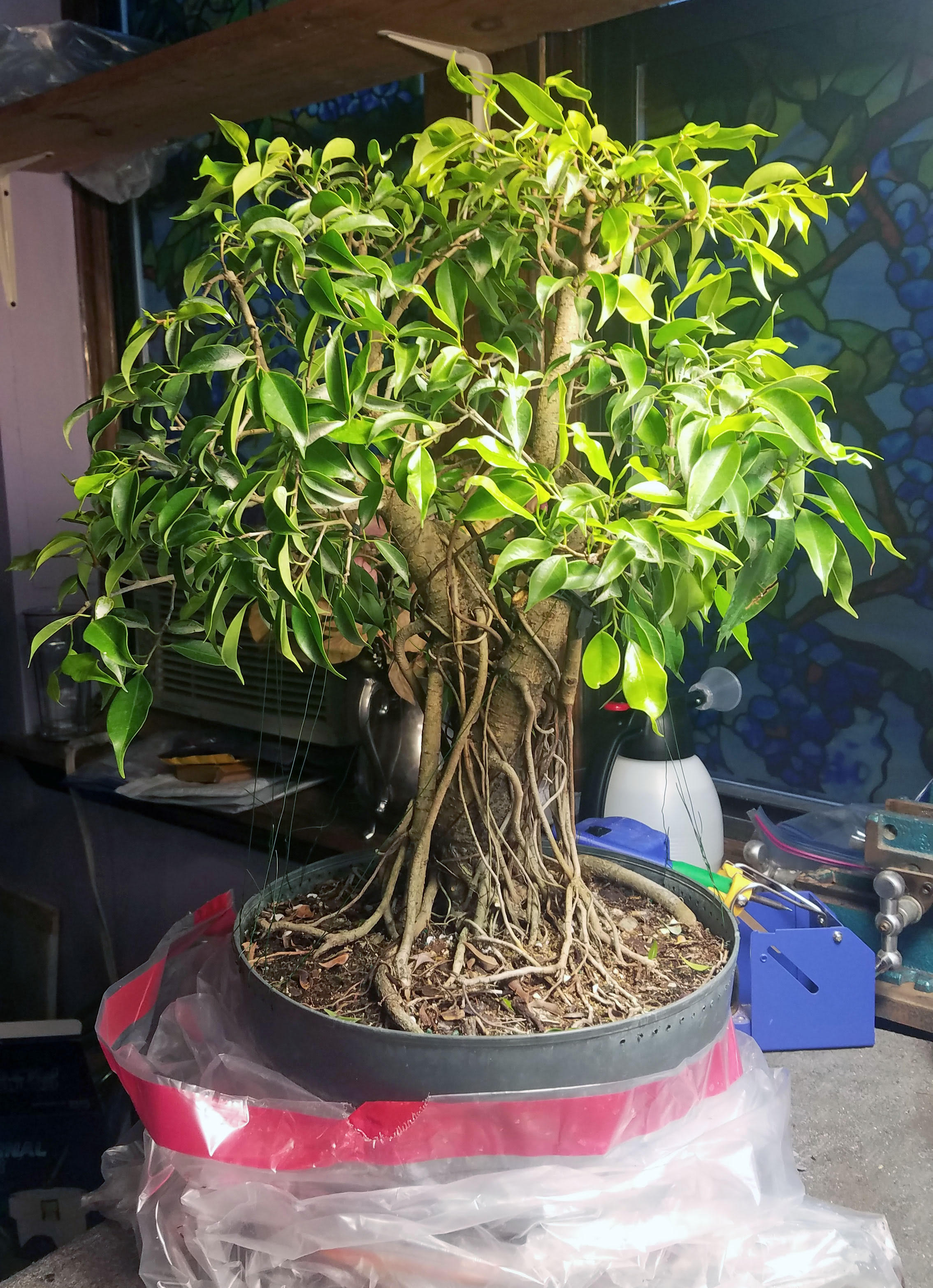 The tree after rough shaping with many branches strategically removed. I also pulled down the branches with wires attached to the edge of the nursery pot.
The tree after rough shaping with many branches strategically removed. I also pulled down the branches with wires attached to the edge of the nursery pot.
 I wanted to create a tunnel and cave under the tree for Ada to live in. Clinicians often bring kids to meet Ada (she always comes up to the glass whenever anyone gets close) and I think they will find the whole house under a tree business enchanting. Little kids visiting Ada is the highlight of this whole terrarium in the office business. The 3” diameter pipe section will provide structure for the salamander subterranean home.
I wanted to create a tunnel and cave under the tree for Ada to live in. Clinicians often bring kids to meet Ada (she always comes up to the glass whenever anyone gets close) and I think they will find the whole house under a tree business enchanting. Little kids visiting Ada is the highlight of this whole terrarium in the office business. The 3” diameter pipe section will provide structure for the salamander subterranean home.
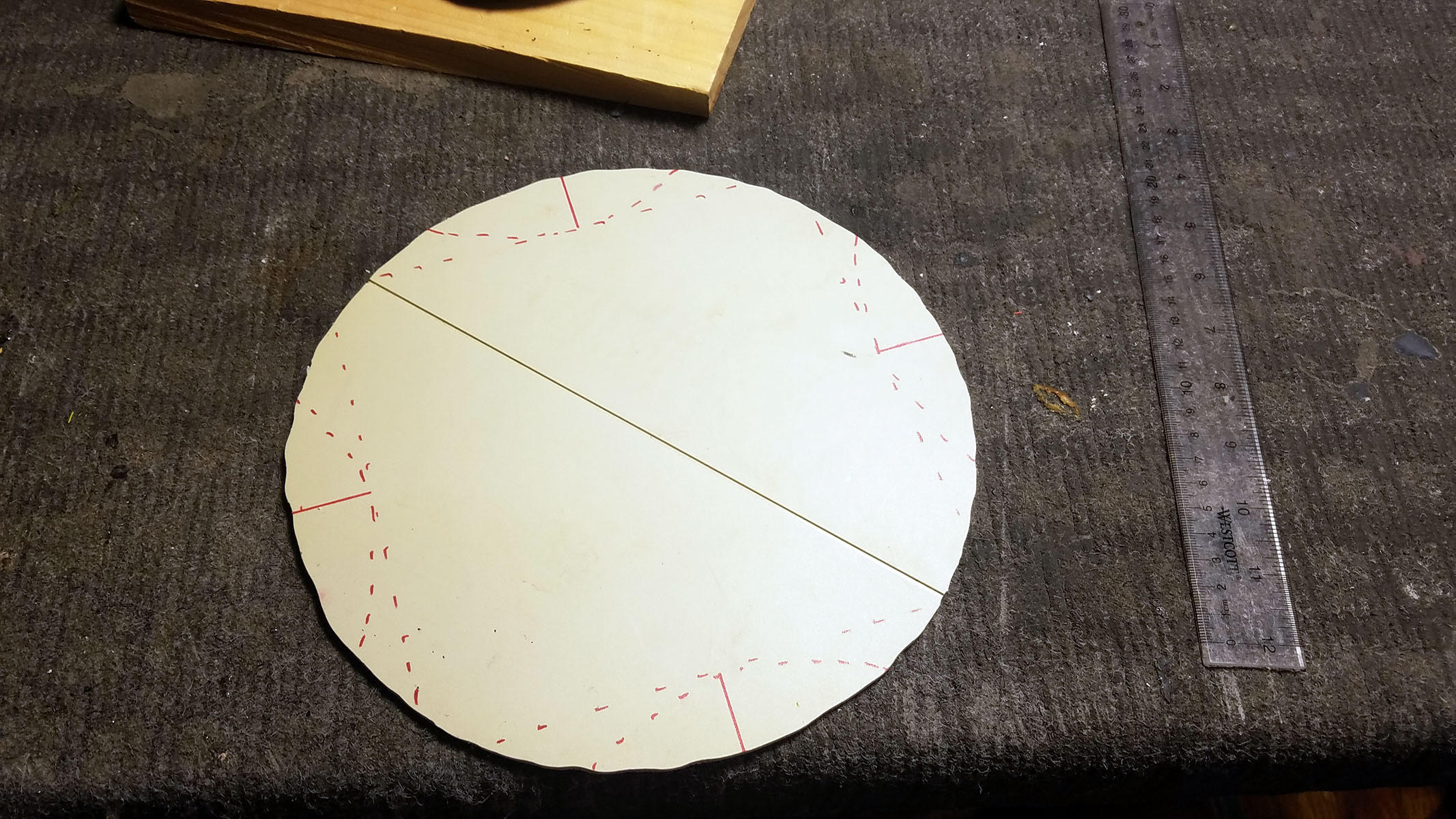 In order to keep the tree upright in a fixed position, it will be wired onto a plastic platform before being placed into the terrarium.
In order to keep the tree upright in a fixed position, it will be wired onto a plastic platform before being placed into the terrarium.
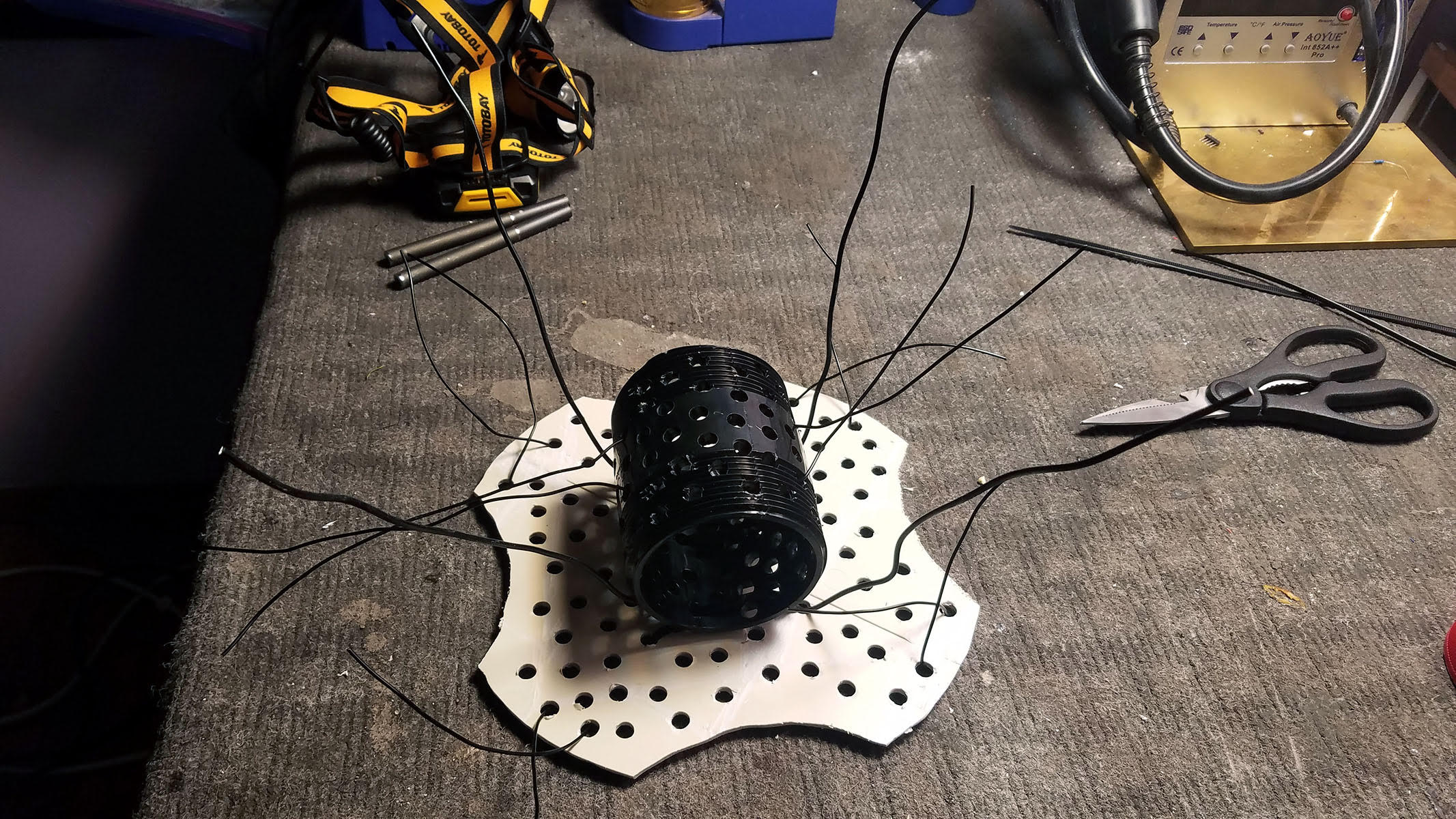 Cave pipe and stabilizing platform with wires attached. The wires will be fastened down onto the roots of the tree.
Cave pipe and stabilizing platform with wires attached. The wires will be fastened down onto the roots of the tree.
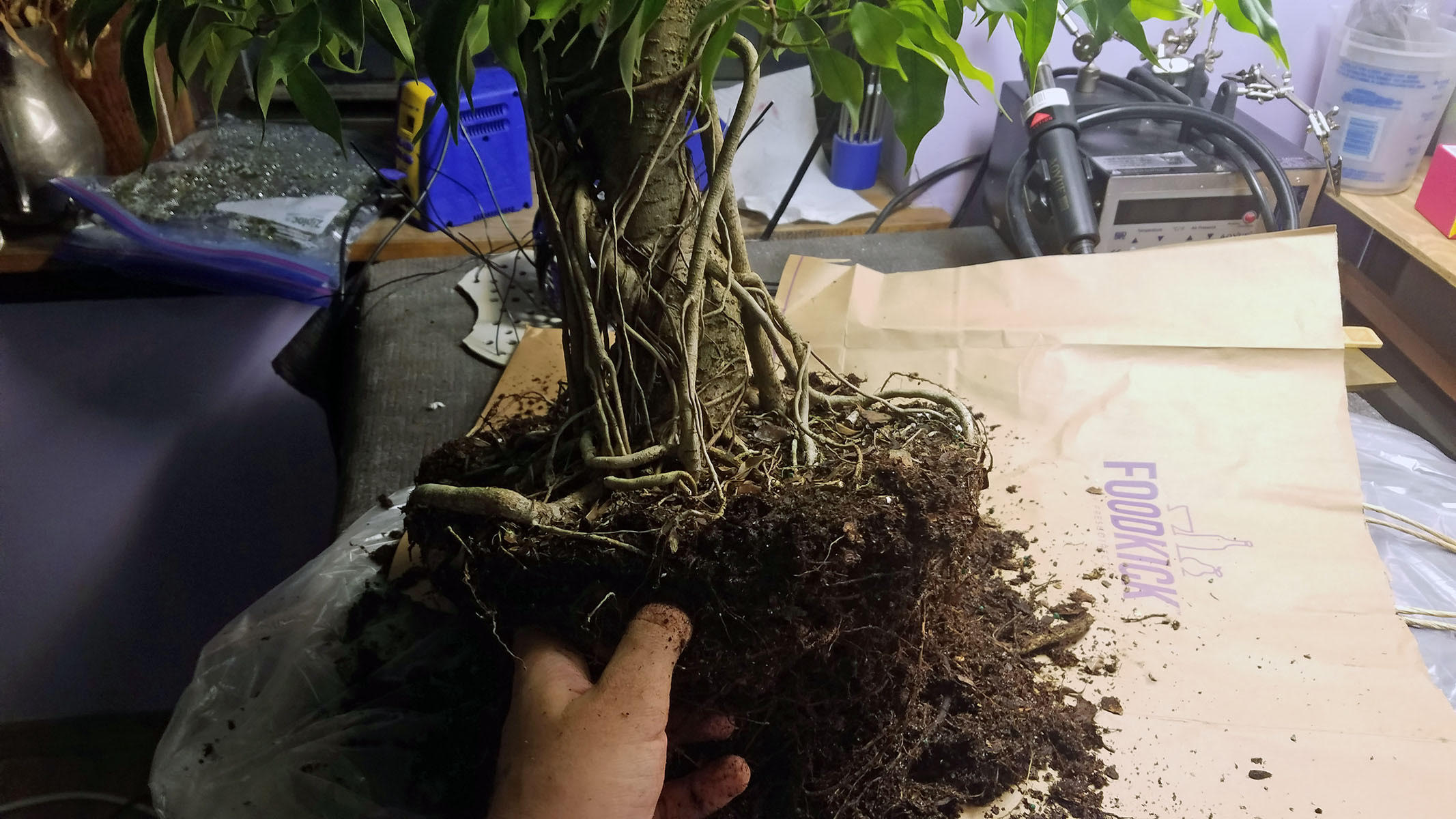 I had to remove 90% of the roots. Many required a small saw.
I had to remove 90% of the roots. Many required a small saw.
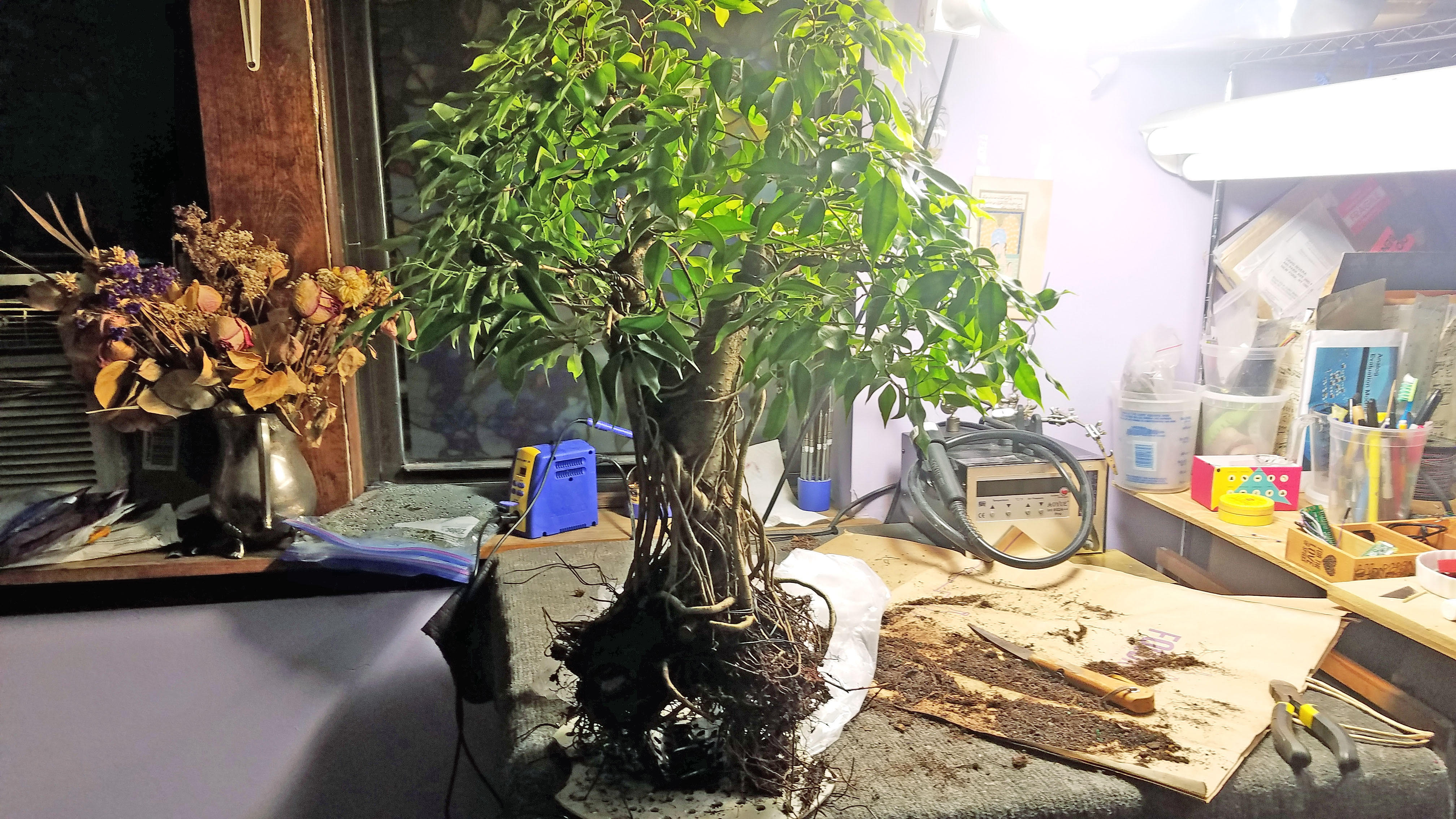
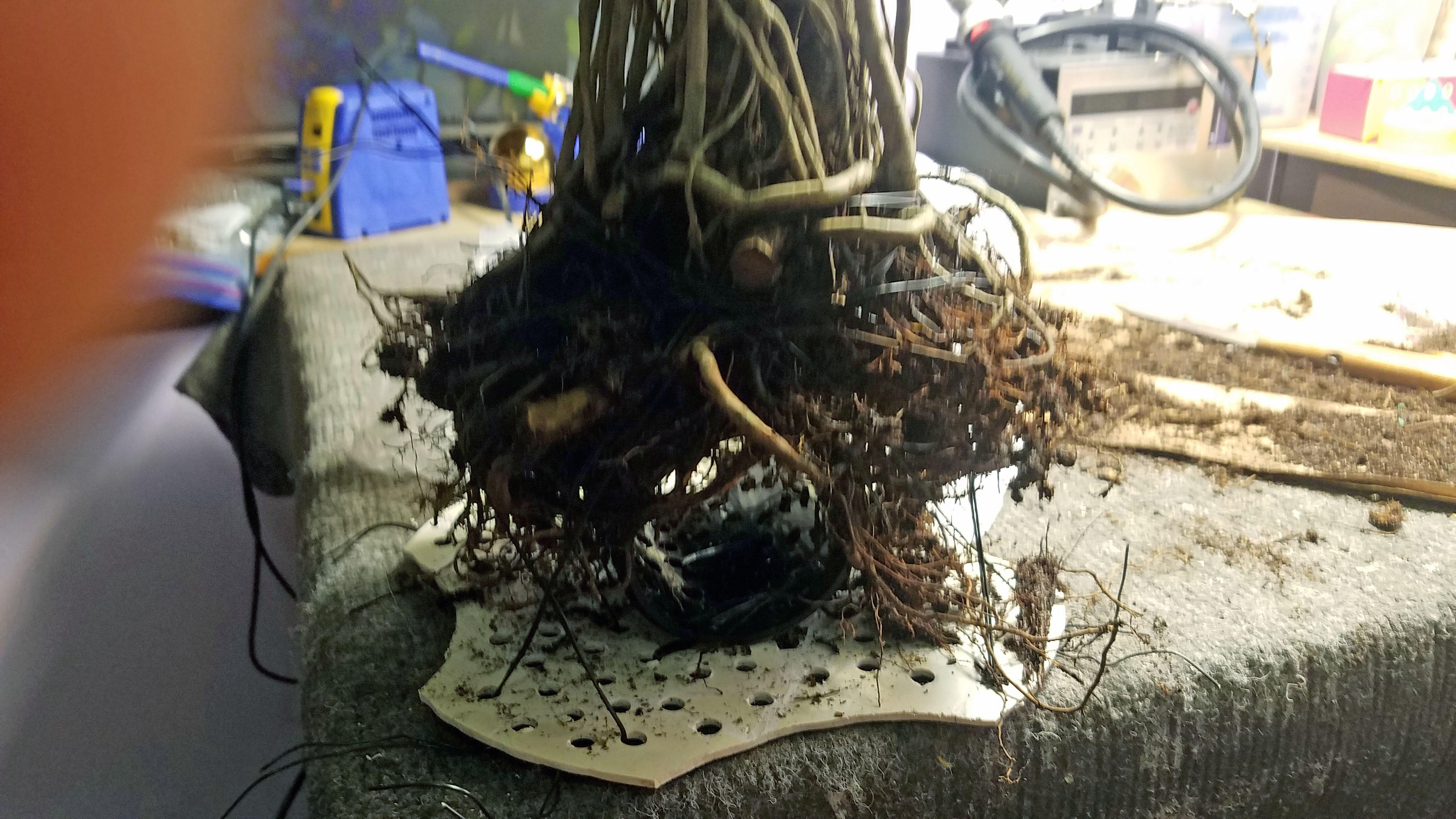 The tree fully wired to pipe and platform. Removing this many roots can be done safely if proper measures are taken. After wiring down the tree I buried everything you see above in wet dirt and placed the entire tree inside a clear plastic trash bag for two months to minimize water loss. If I had put the tree in a terrarium straight away it certainly would have died.
The tree fully wired to pipe and platform. Removing this many roots can be done safely if proper measures are taken. After wiring down the tree I buried everything you see above in wet dirt and placed the entire tree inside a clear plastic trash bag for two months to minimize water loss. If I had put the tree in a terrarium straight away it certainly would have died.
 Now for building the terrarium proper. The bottom two-thirds of the terrarium consists of a water-filled reservoir that constantly provides moisture. The reservoir contains layers of clay pebbles and activated charcoal pellets separated by plastic mesh.
Now for building the terrarium proper. The bottom two-thirds of the terrarium consists of a water-filled reservoir that constantly provides moisture. The reservoir contains layers of clay pebbles and activated charcoal pellets separated by plastic mesh.
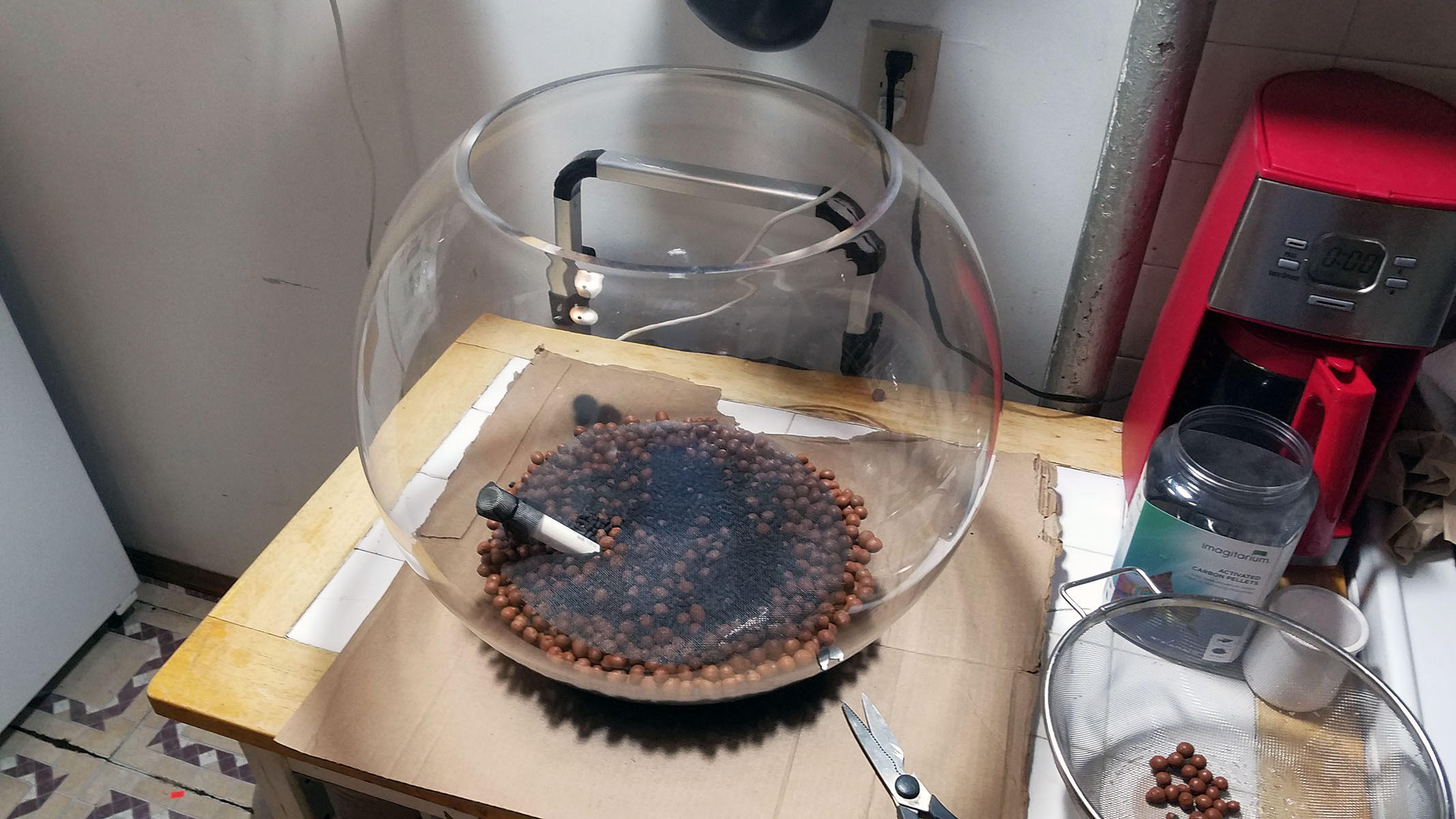 A length of PVC pipe sealed with plastic mesh is used as a sump. A plastic hose is inserted into the sump so water can be siphoned out if the terrarium needs to be moved or cleaned (flushed).
A length of PVC pipe sealed with plastic mesh is used as a sump. A plastic hose is inserted into the sump so water can be siphoned out if the terrarium needs to be moved or cleaned (flushed).

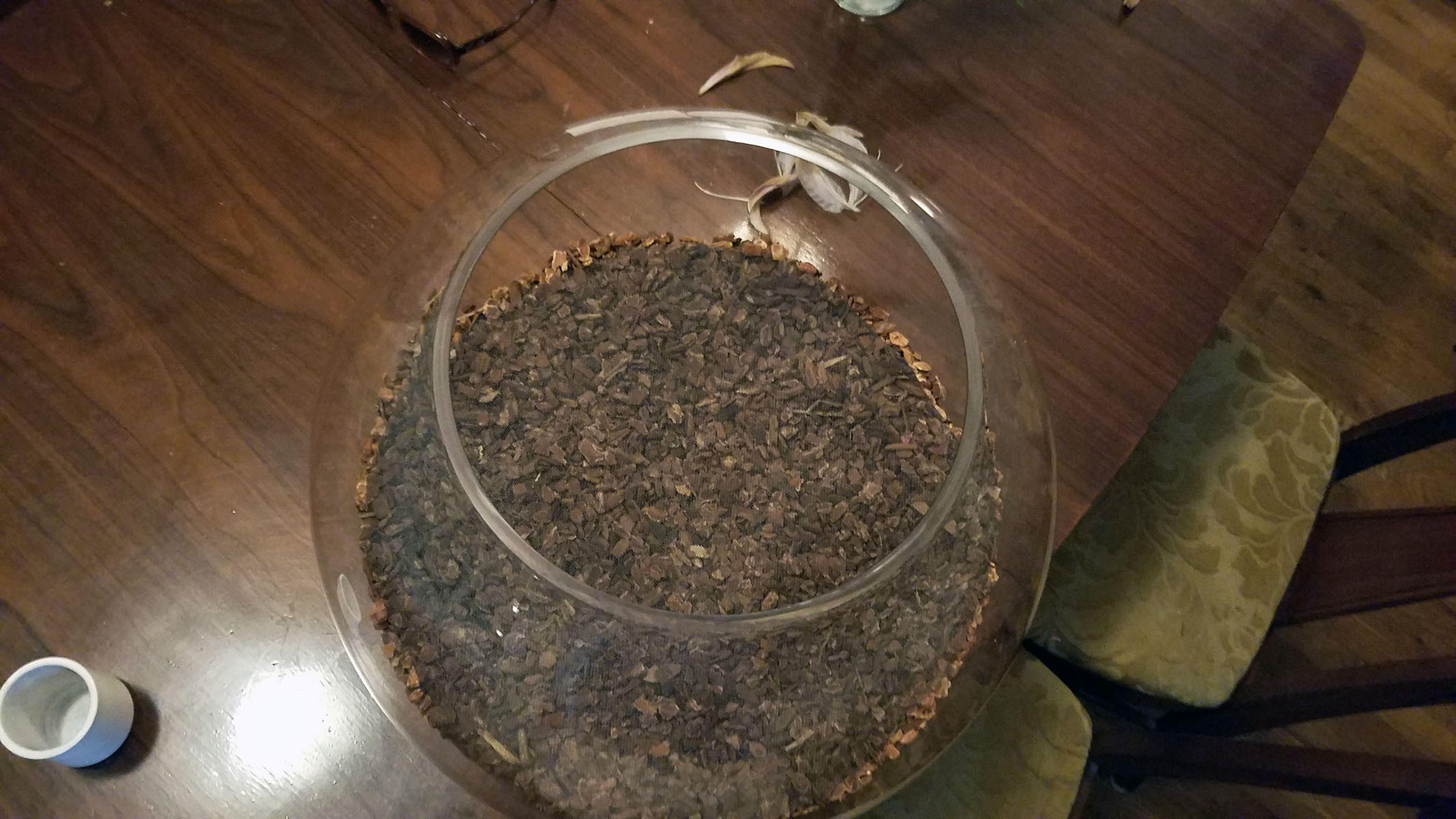 A layer of chopped bark goes between the water-filled pebble reservoir.
A layer of chopped bark goes between the water-filled pebble reservoir.
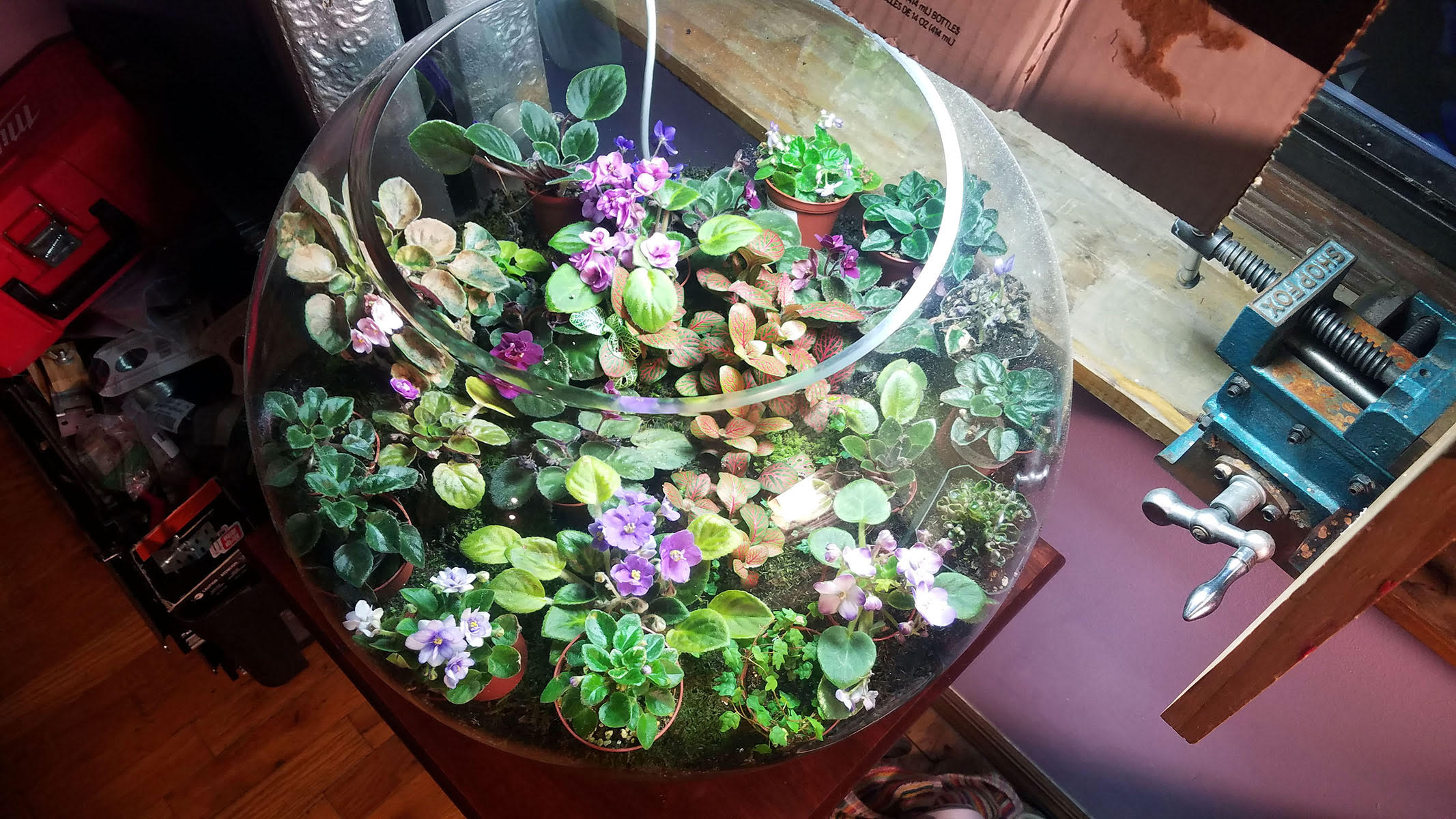 Since I had to wait 6 months to let the Banyan tree recover + do some additional bonsai shaping I temporarily planted some miniature African violets and the plants I eventually used for the terrarium.
Since I had to wait 6 months to let the Banyan tree recover + do some additional bonsai shaping I temporarily planted some miniature African violets and the plants I eventually used for the terrarium.

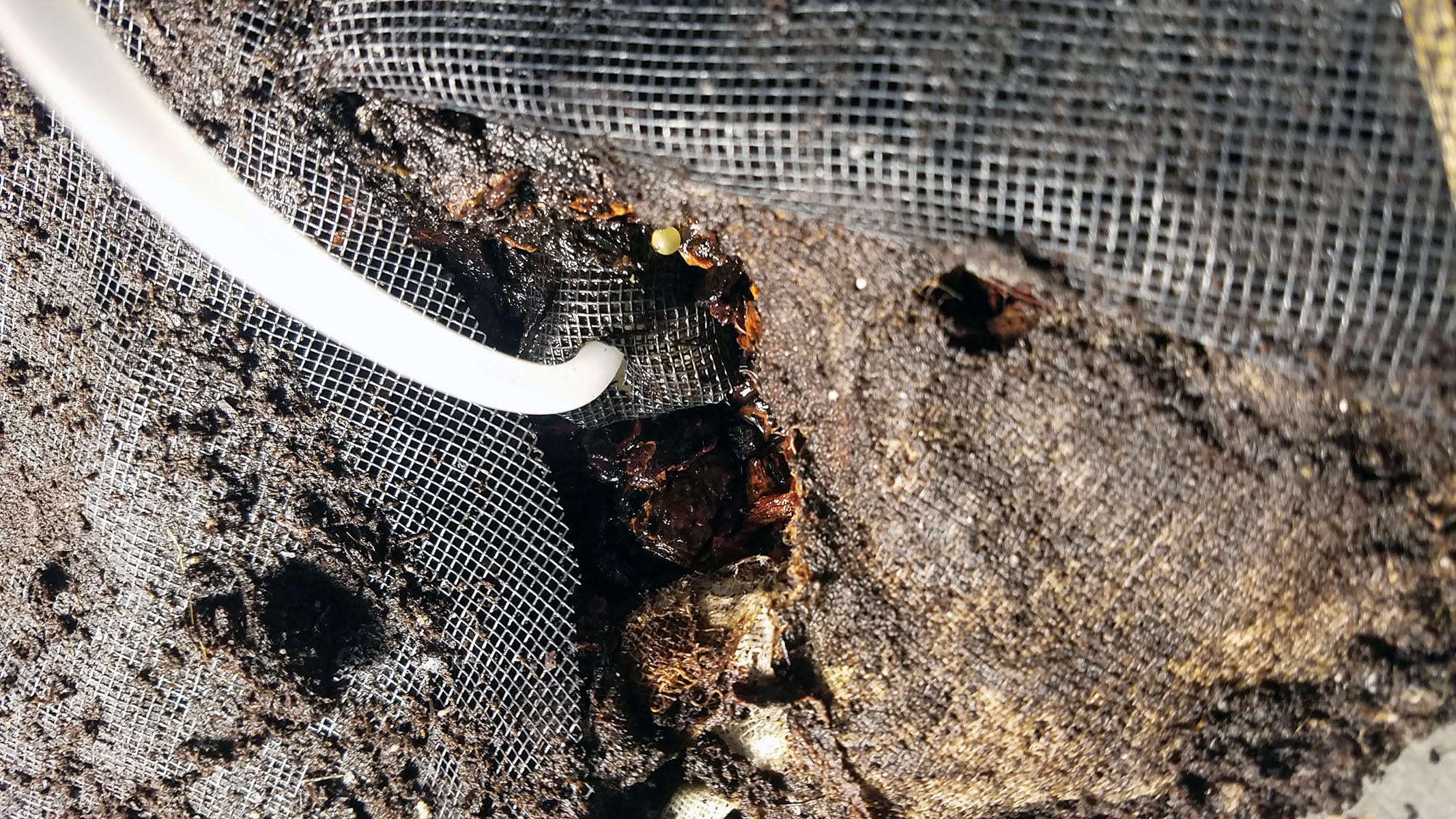 Temporary planting removed and ready to be drained using the sump and siphon hose.
Temporary planting removed and ready to be drained using the sump and siphon hose.
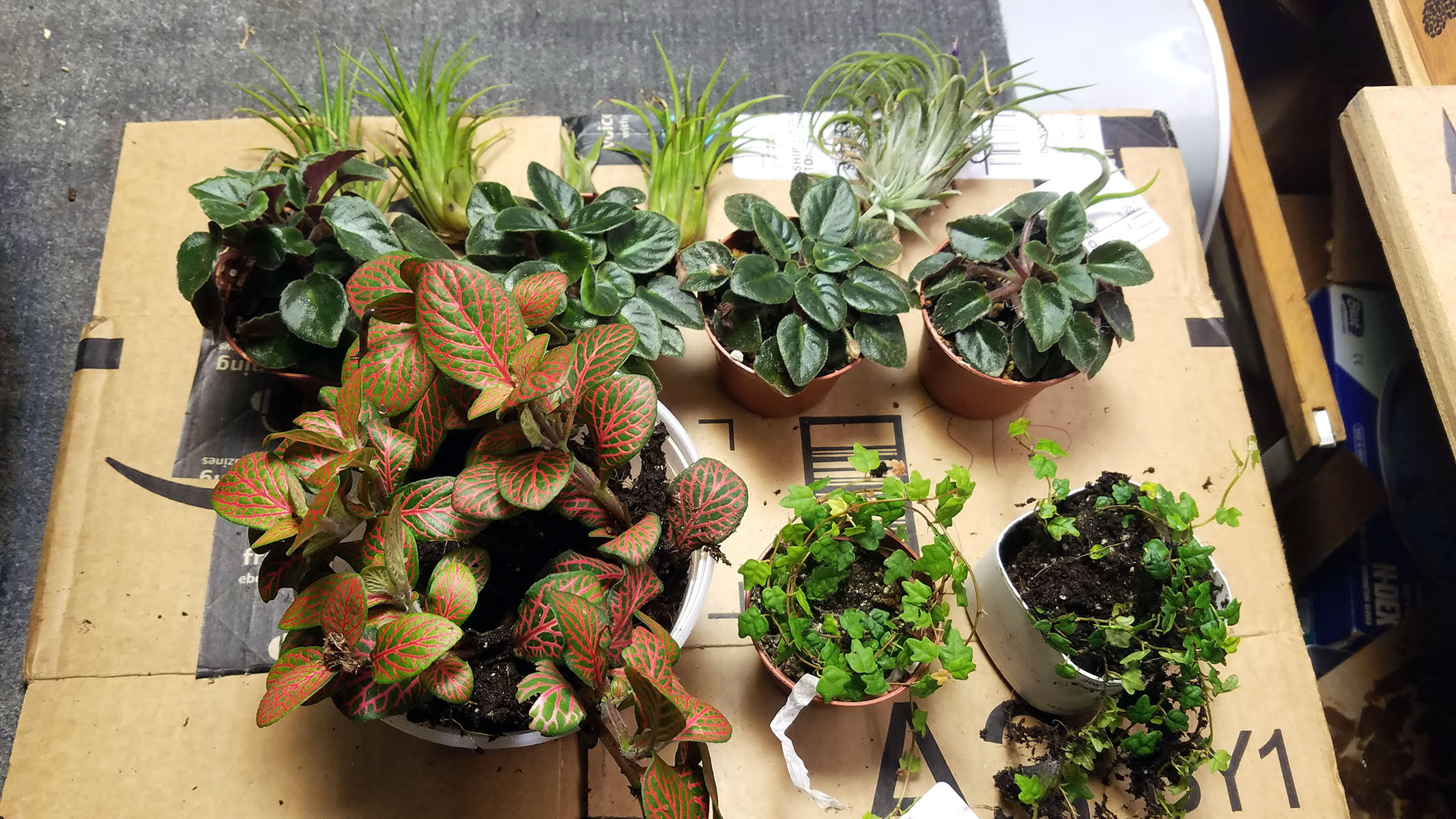 These are the plants I use in addition to the Banyan tree.
From the top:
Air Plant (Tillandsia ionantha)
Miniature African Violets (Saintpaulia ionantha, “Heartbreak Kid” and “Little Ruby” cultivars)
Miniature Oak Leaf Creeping Fig (Ficus Pumila)
Red Vein Miniature Nerve Plant (Fittonia albivenis cultivar)
These are the plants I use in addition to the Banyan tree.
From the top:
Air Plant (Tillandsia ionantha)
Miniature African Violets (Saintpaulia ionantha, “Heartbreak Kid” and “Little Ruby” cultivars)
Miniature Oak Leaf Creeping Fig (Ficus Pumila)
Red Vein Miniature Nerve Plant (Fittonia albivenis cultivar)
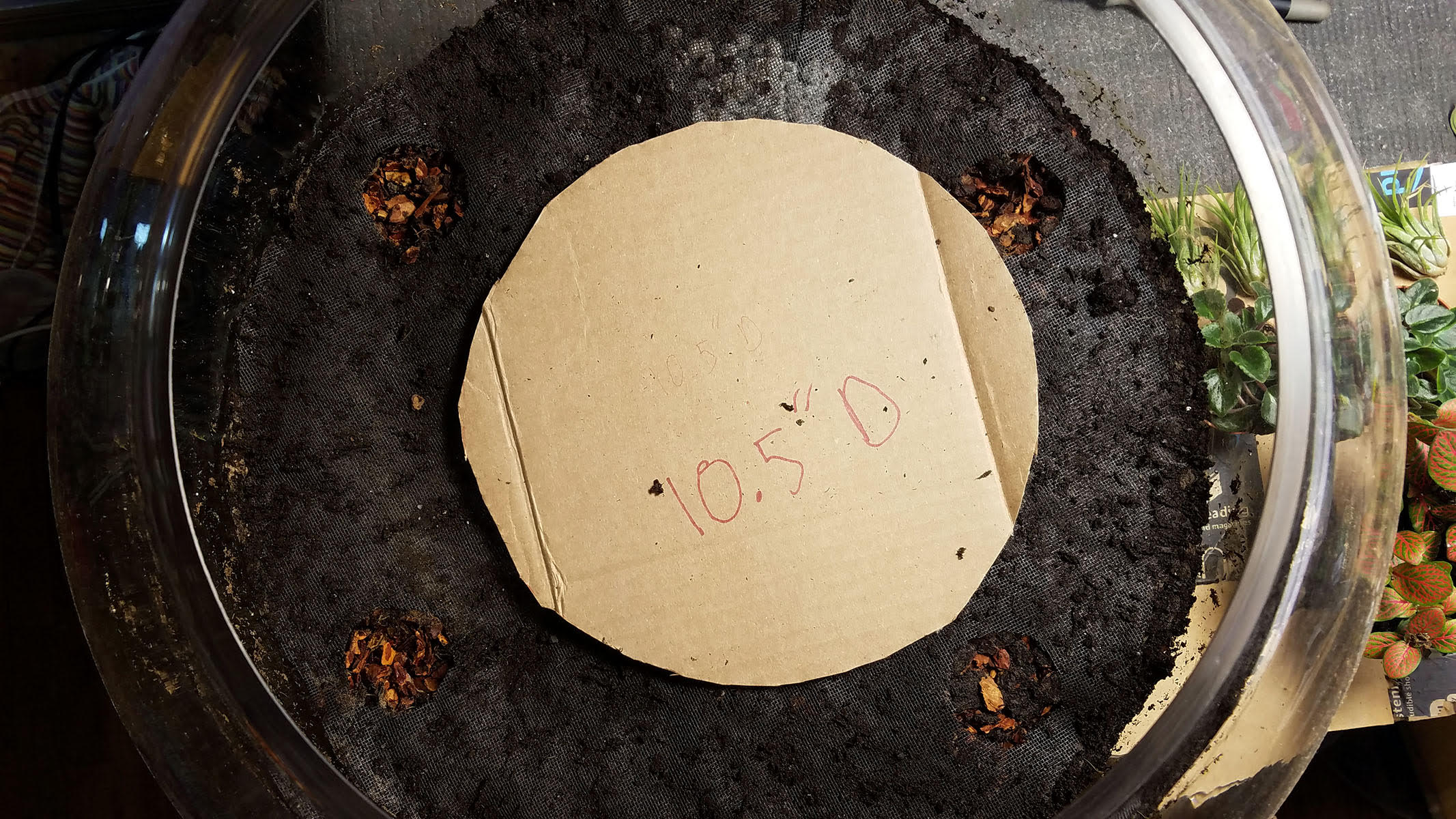
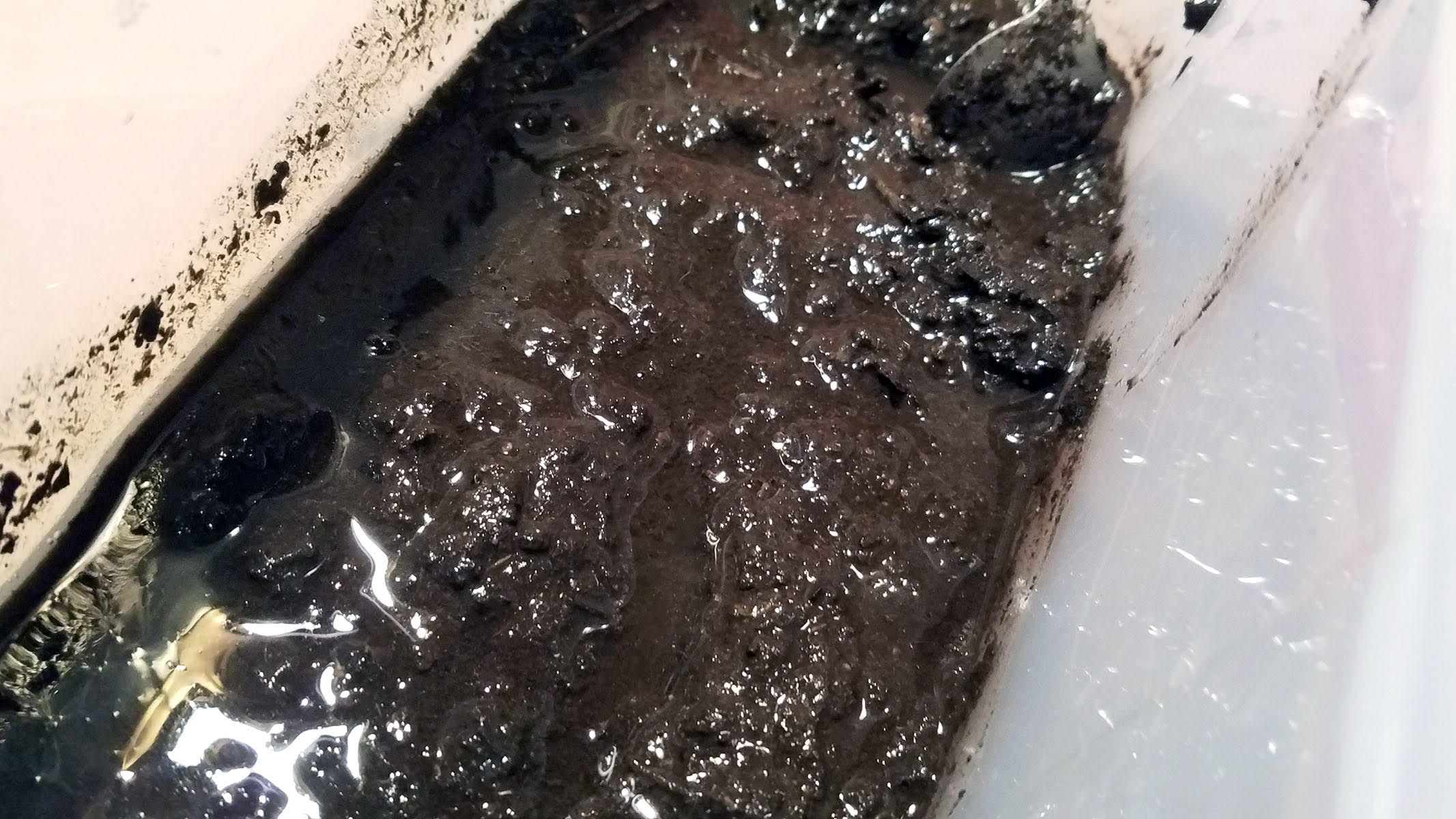
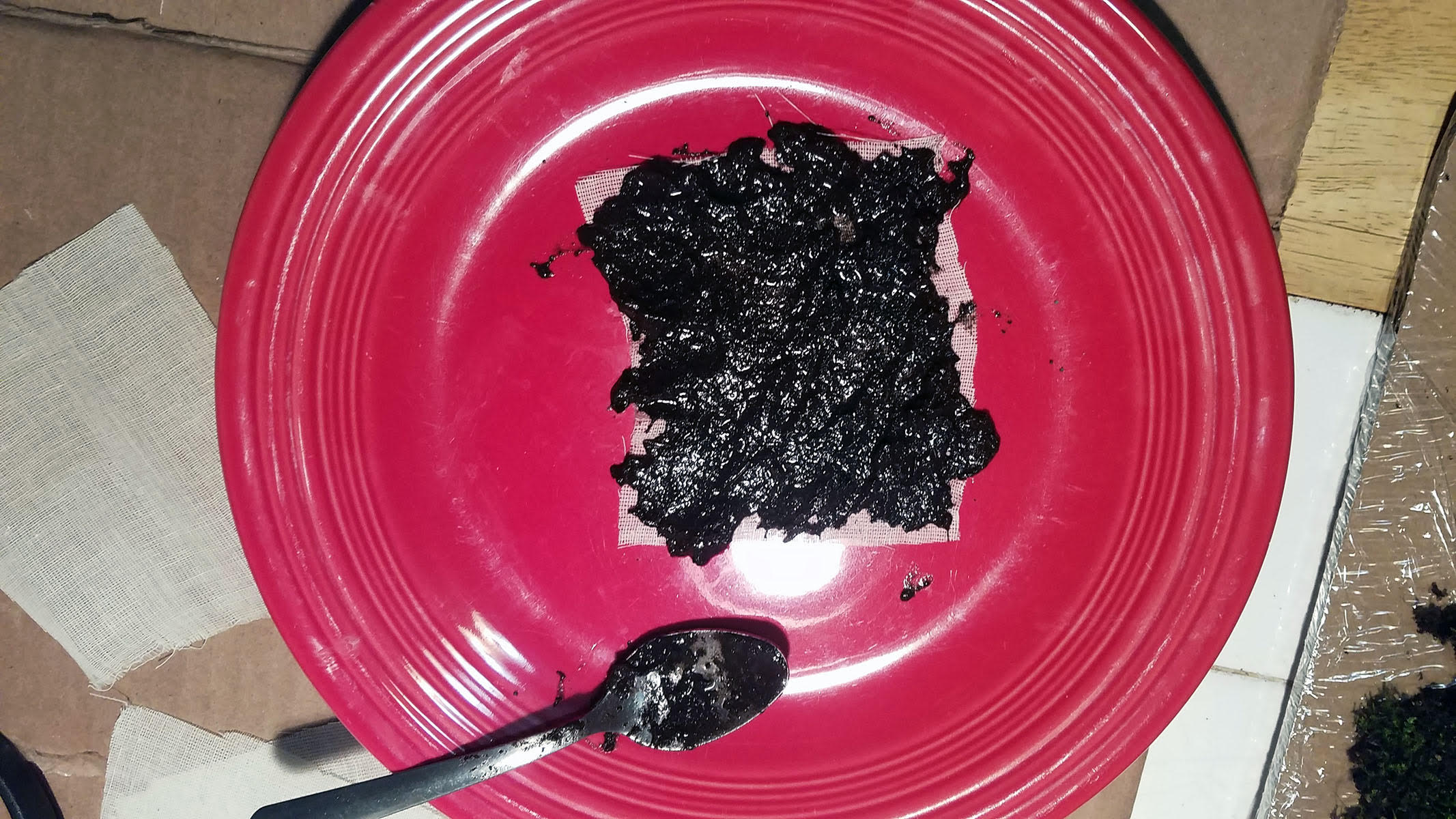
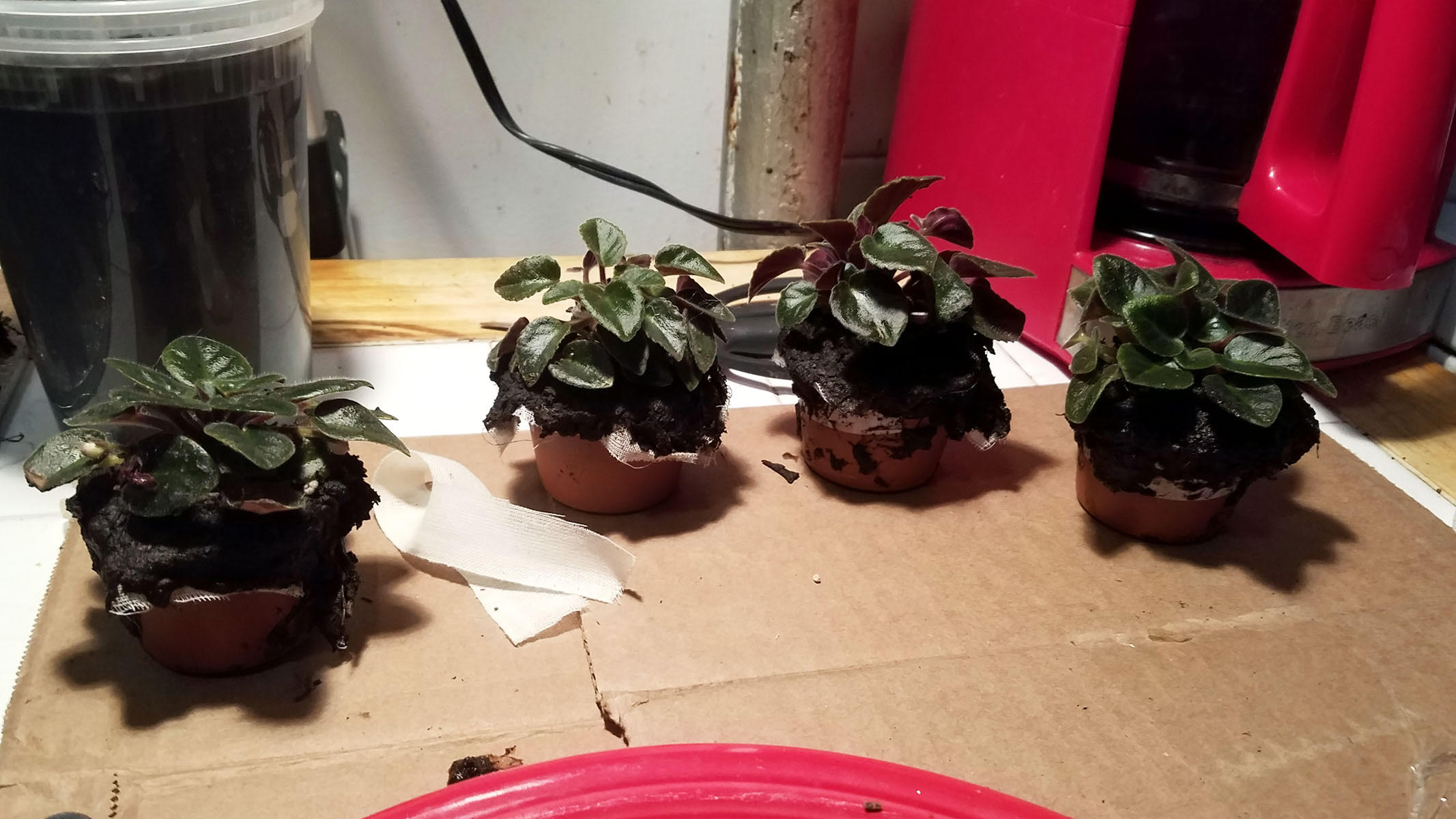
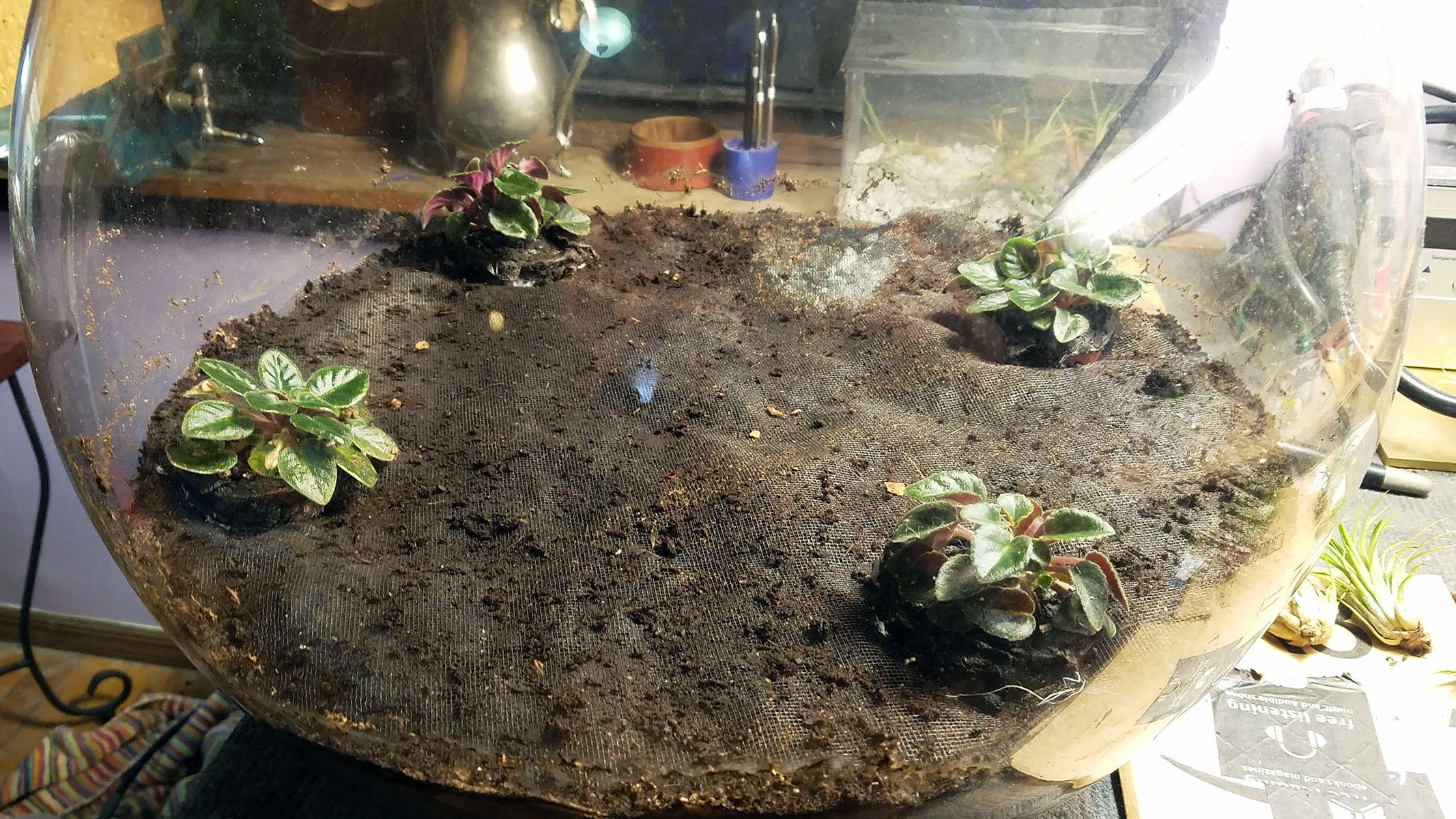 African violets must have their roots constrained to bloom indoors. Holes are carved out of the terrarium substrate so that the entire African violet pots can be planted. I have had issues getting moss to grow over potting soil in the past so I decided to do an experiment this time around. I covered cheesecloth with heavy layers of lake mud from Prospect Park and placed it everywhere moss will eventually be planted - including the base of each African violet. Hopefully, the lake mud and cheesecloth will provide dense water logged media more palatable to moss.
African violets must have their roots constrained to bloom indoors. Holes are carved out of the terrarium substrate so that the entire African violet pots can be planted. I have had issues getting moss to grow over potting soil in the past so I decided to do an experiment this time around. I covered cheesecloth with heavy layers of lake mud from Prospect Park and placed it everywhere moss will eventually be planted - including the base of each African violet. Hopefully, the lake mud and cheesecloth will provide dense water logged media more palatable to moss.
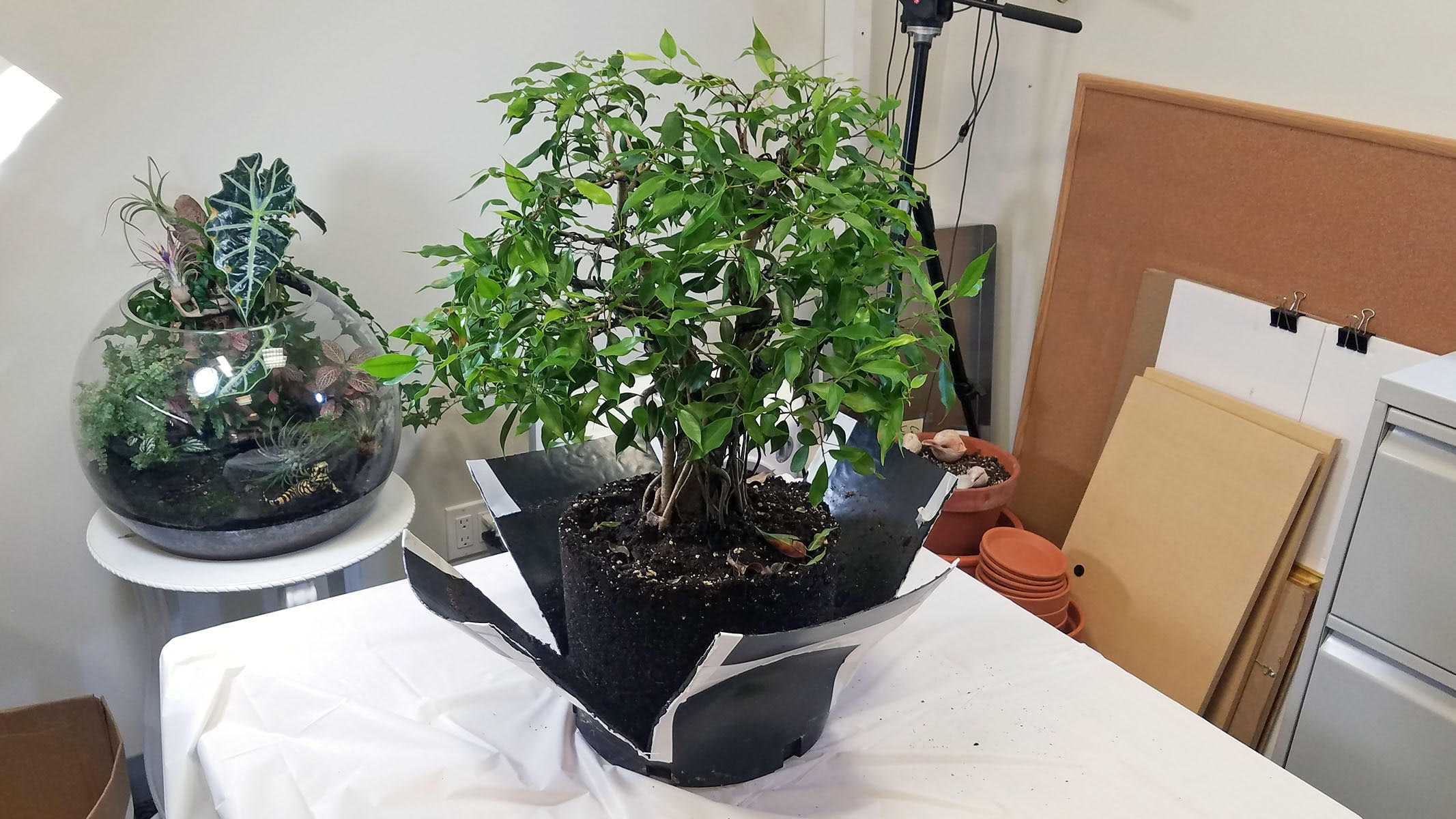 Unboxing the Banyan from its recovery pot at the office.
Unboxing the Banyan from its recovery pot at the office.
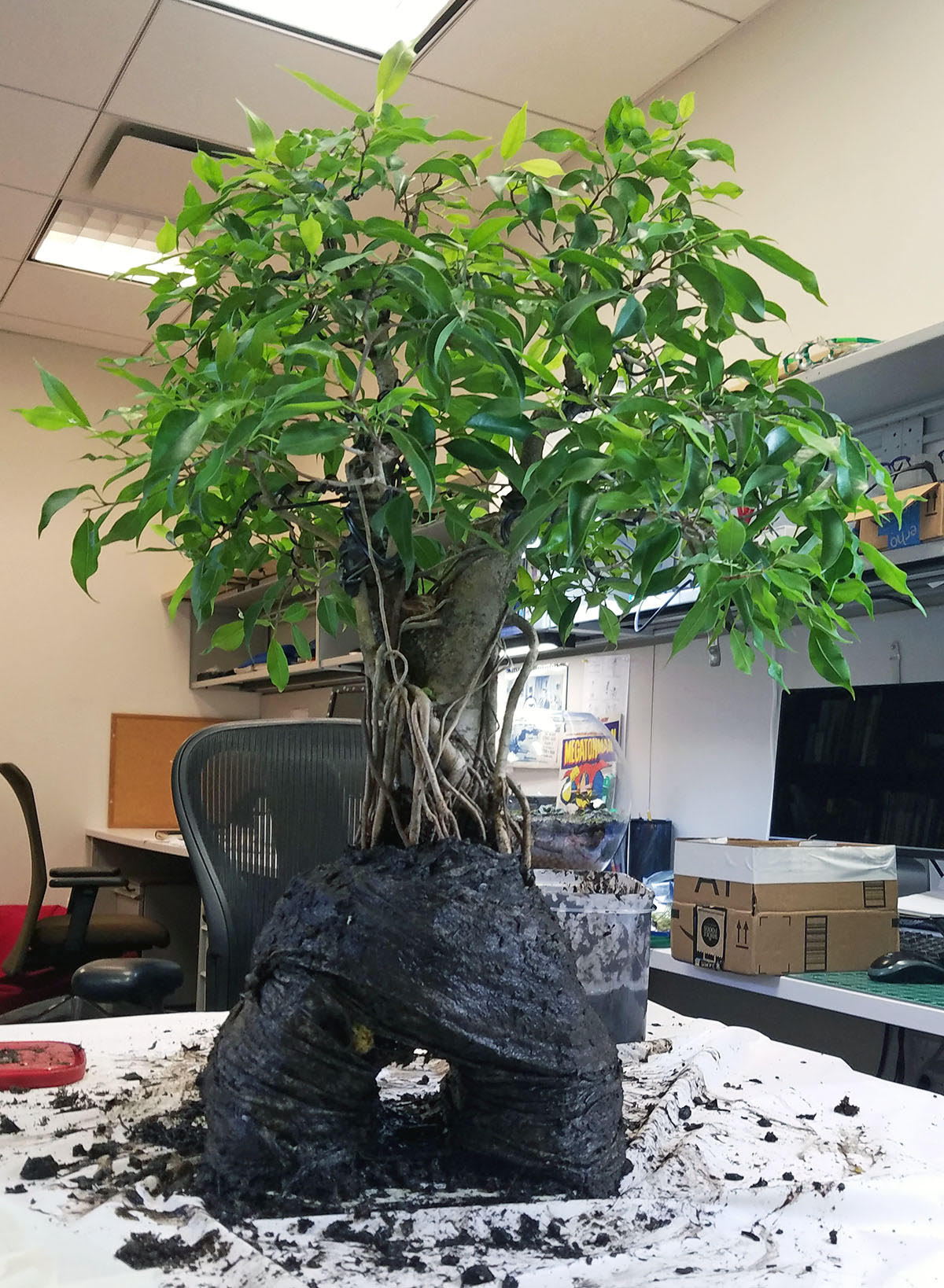 The base of the tree is packed with soil and swaddled in lake mud saturated cheesecloth.
The base of the tree is packed with soil and swaddled in lake mud saturated cheesecloth.
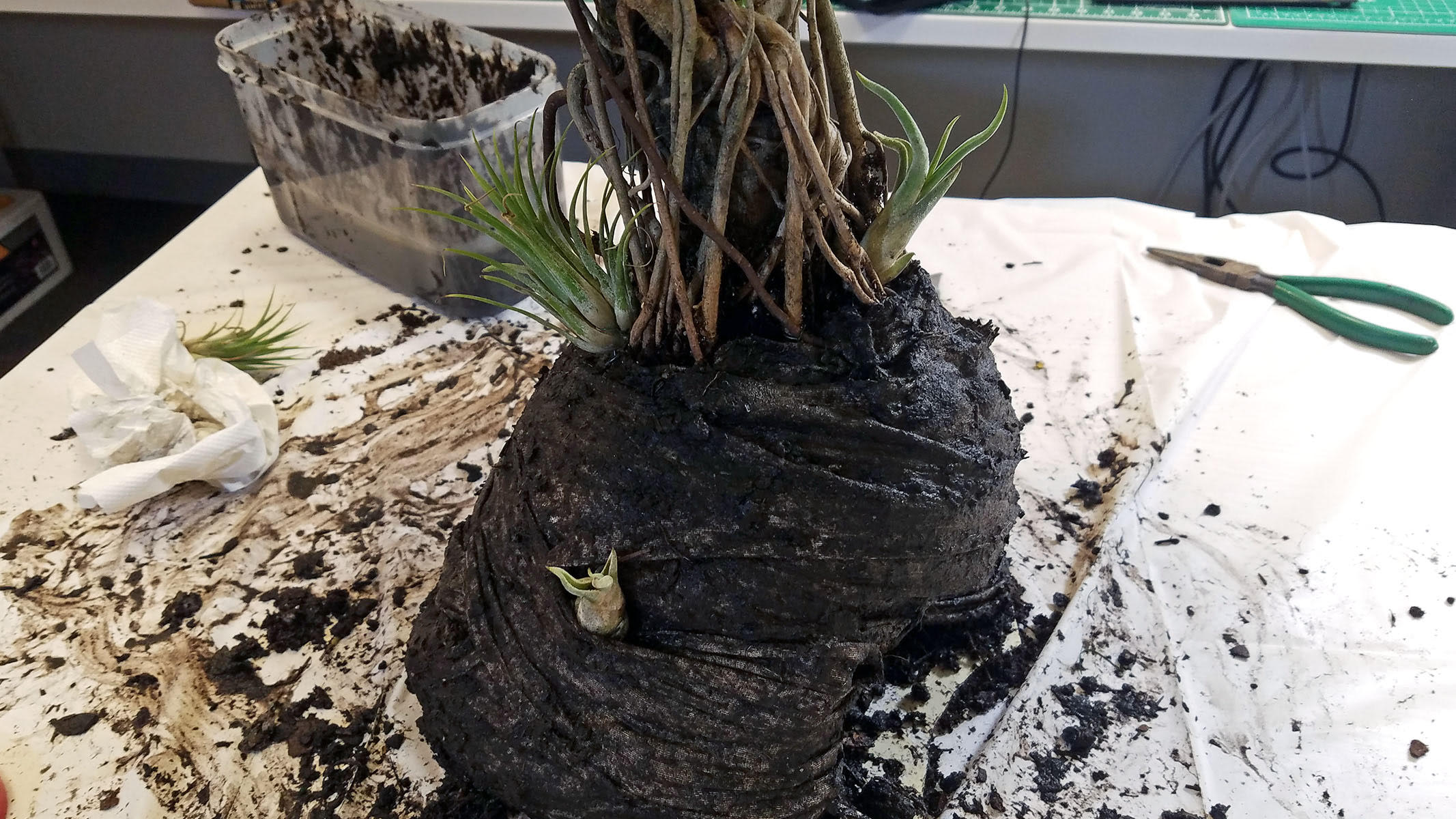 Placing air plants.
Placing air plants.
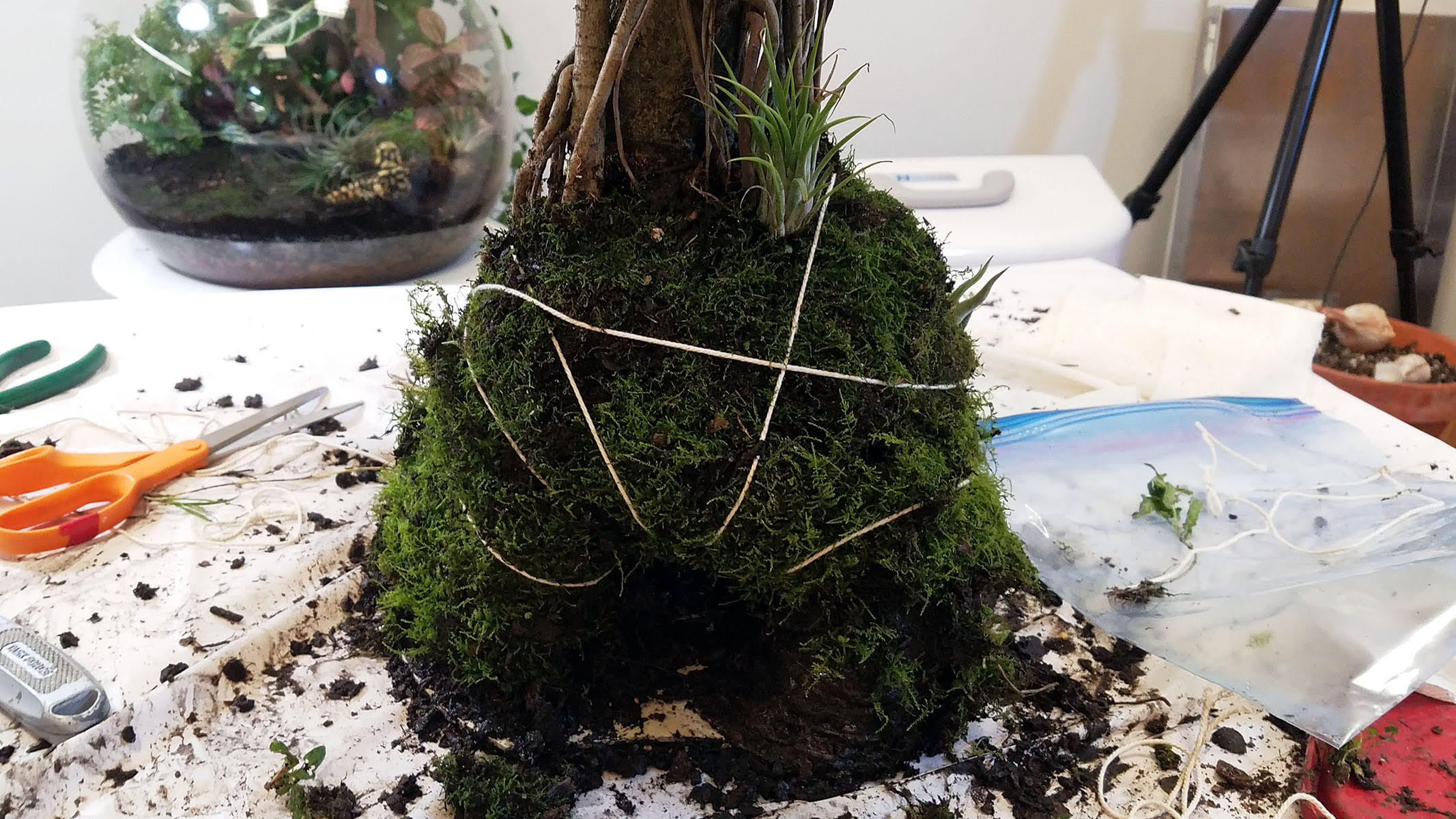 Covering the base of the tree with moss. Cotton string is used to keep the moss in place when necessary.
Covering the base of the tree with moss. Cotton string is used to keep the moss in place when necessary.
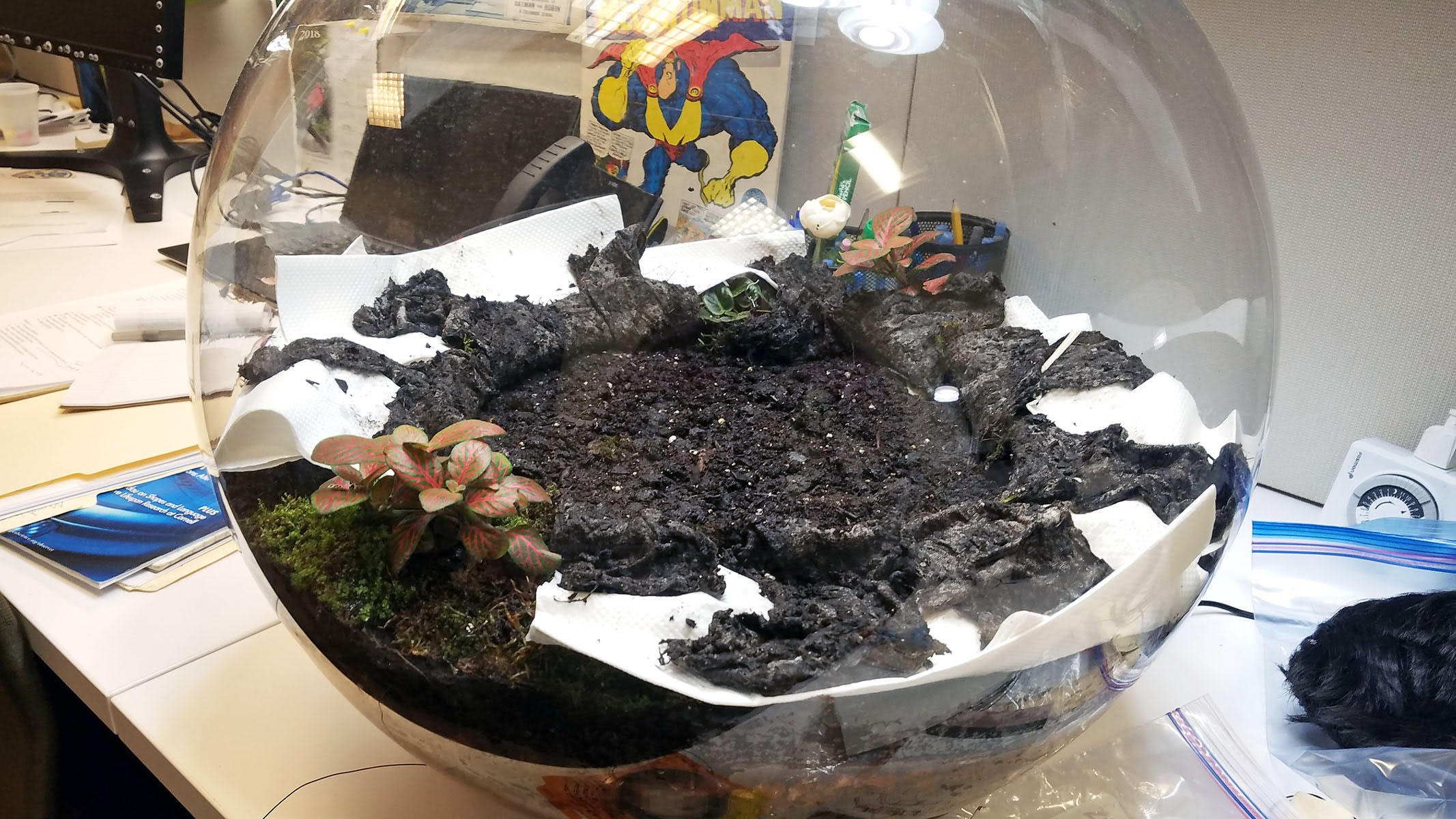 Prepping the terrarium for the tree.
Prepping the terrarium for the tree.
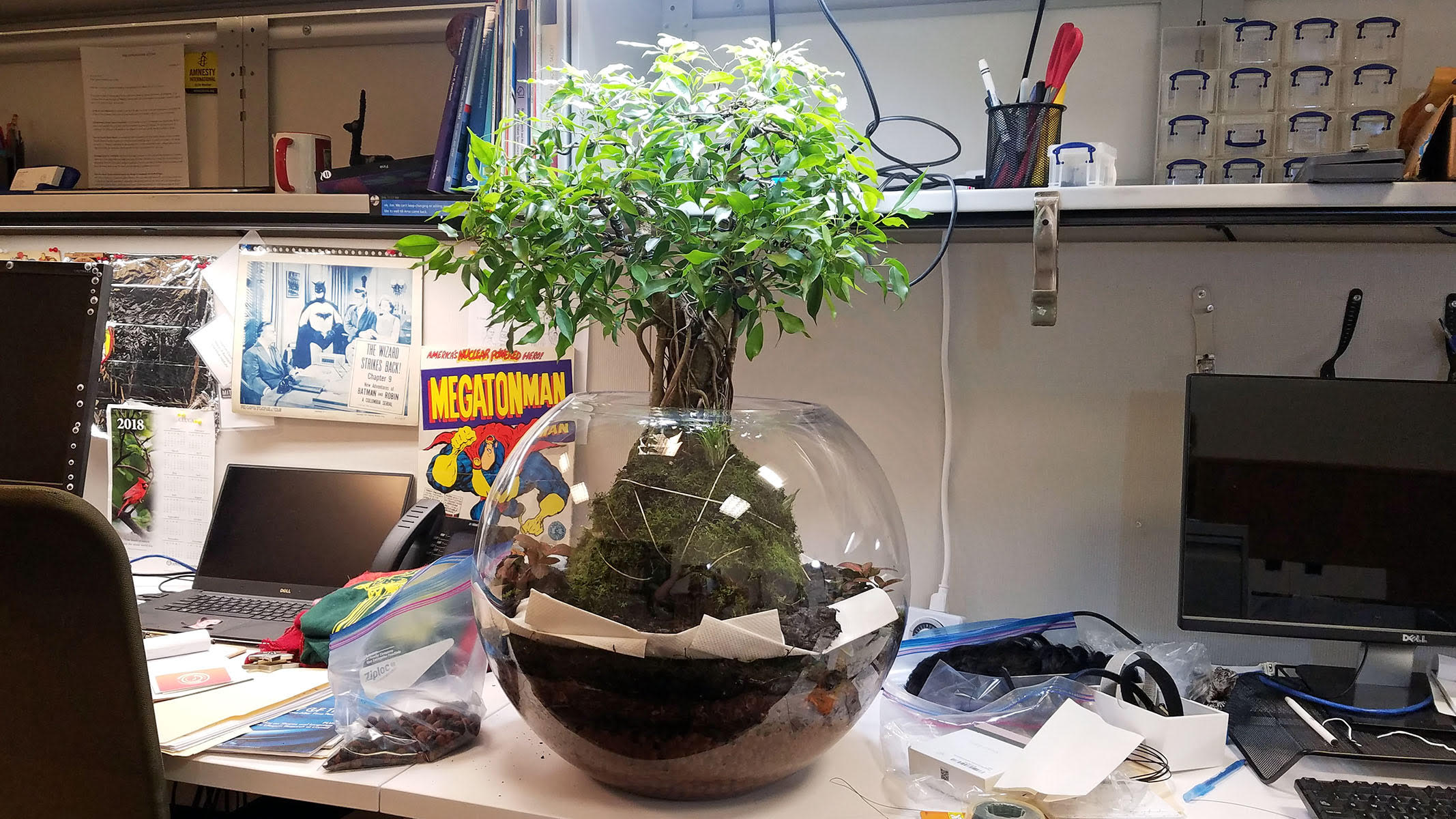 The Banyan tree is carefully lifted into the terrarium and pumice pebbles are placed under the plastic platform to level it where necessary.
The Banyan tree is carefully lifted into the terrarium and pumice pebbles are placed under the plastic platform to level it where necessary.
 Nerve plants and creeping fig are bundled in lake mud cheesecloth prior to planting.
Nerve plants and creeping fig are bundled in lake mud cheesecloth prior to planting.
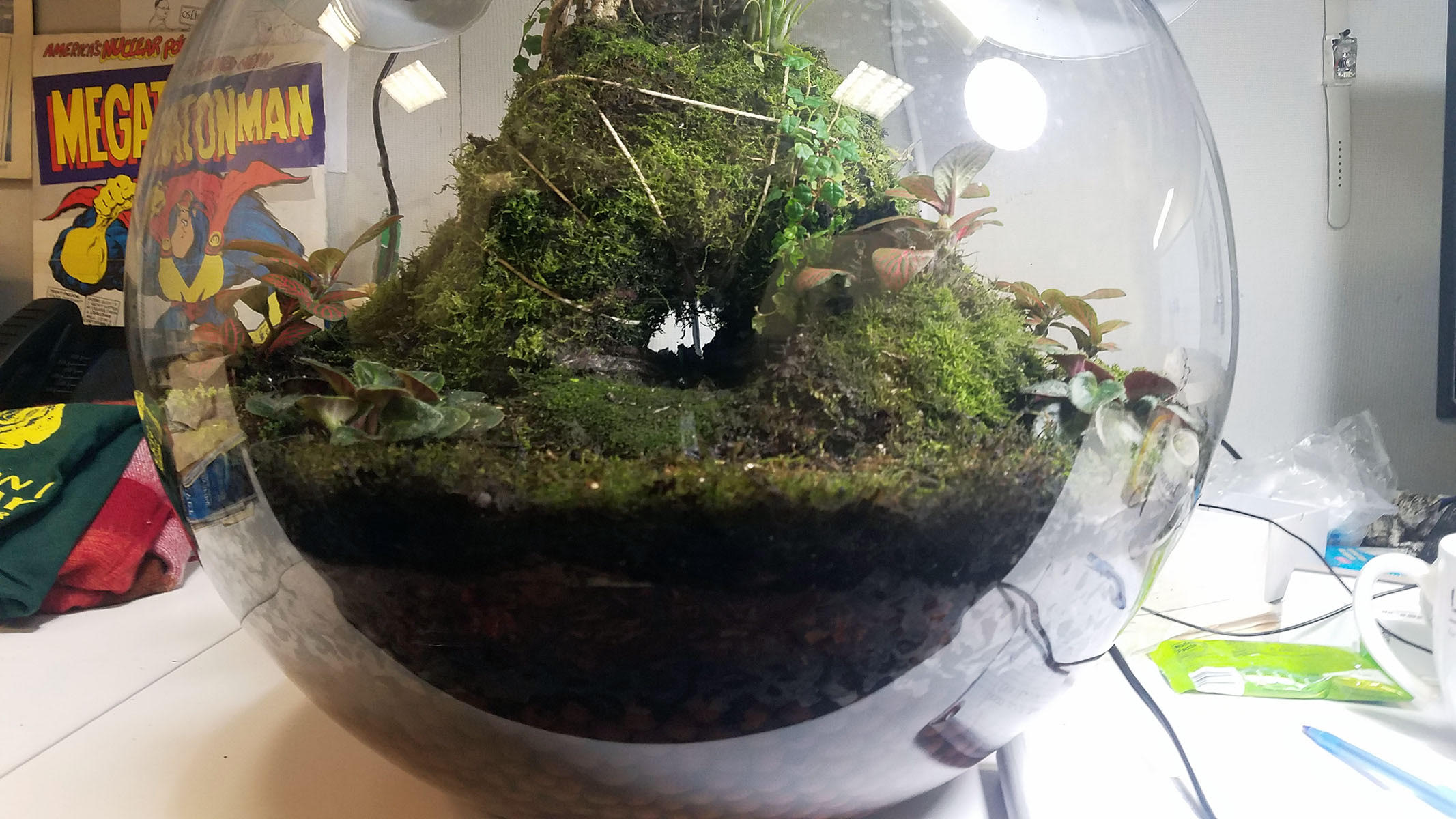
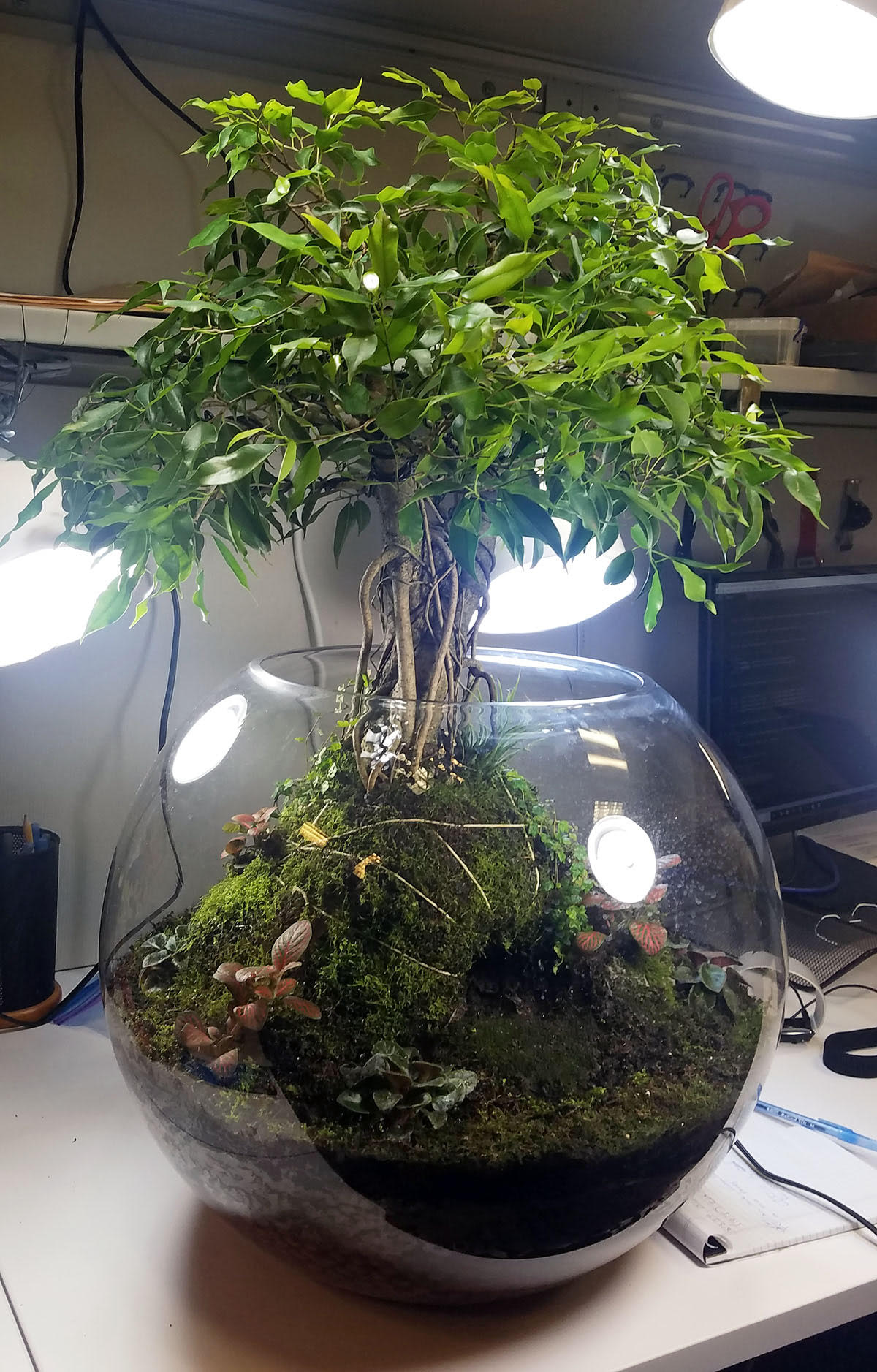
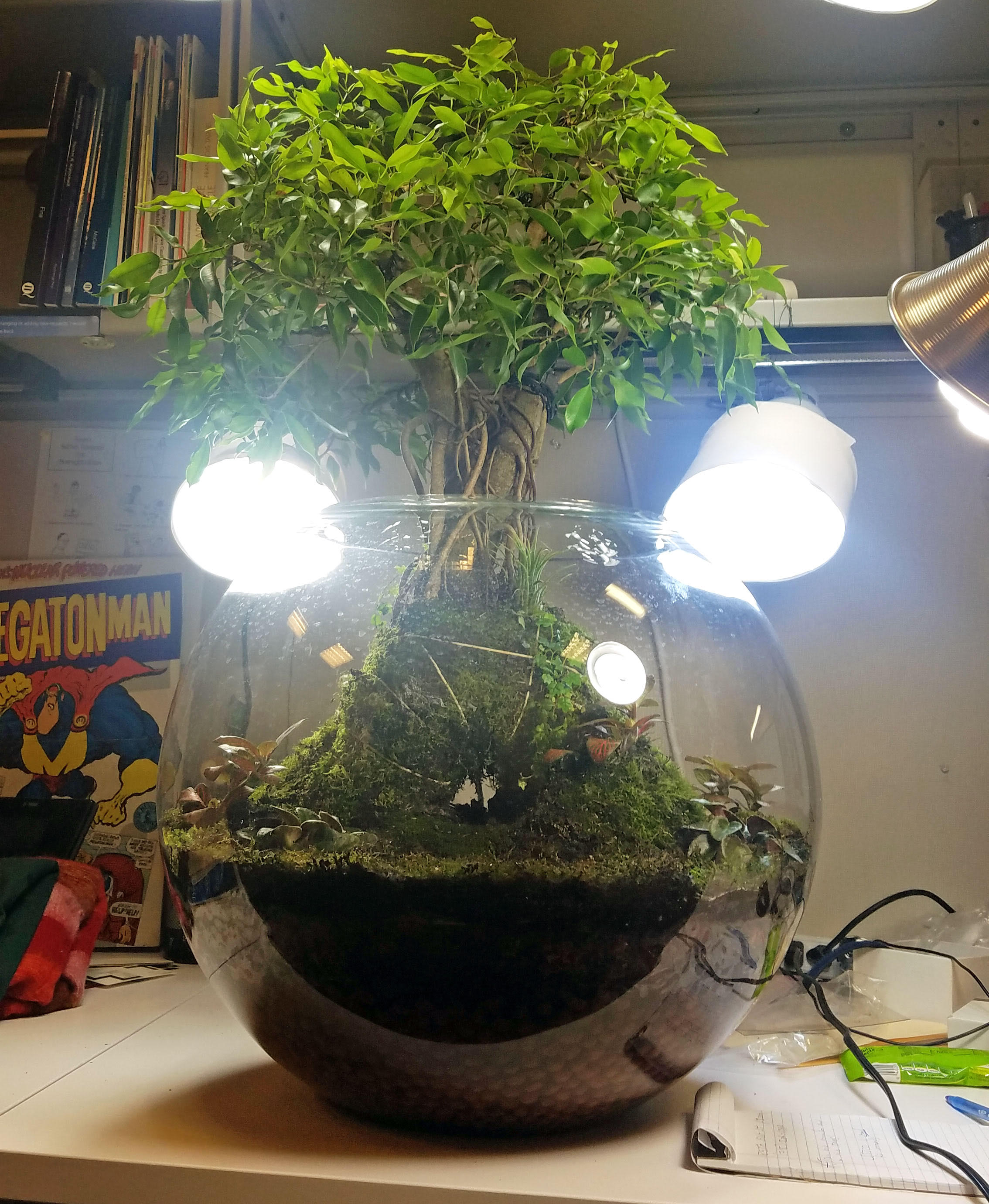 All done!
All done!
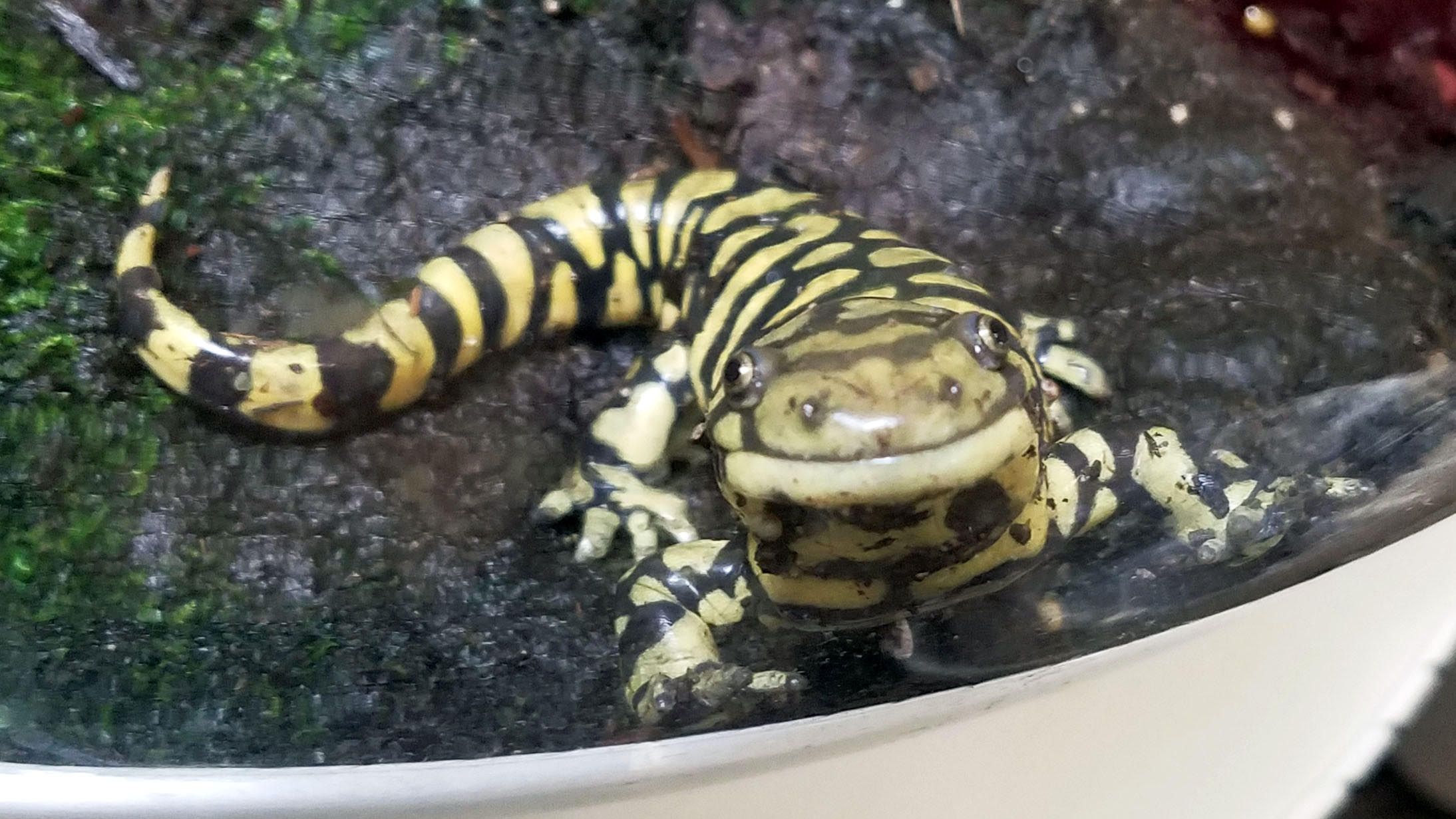 Ada can’t wait! She also really likes to dig holes so I’m giving the new terrarium a couple weeks to recover before moving her. Then she will have a new home under a Banyan tree - and maybe even attain enlightenment.
Ada can’t wait! She also really likes to dig holes so I’m giving the new terrarium a couple weeks to recover before moving her. Then she will have a new home under a Banyan tree - and maybe even attain enlightenment.